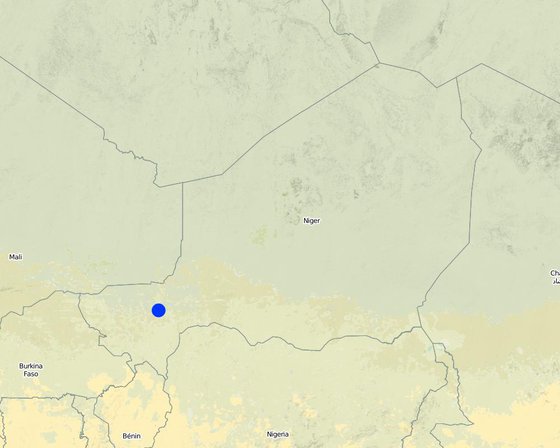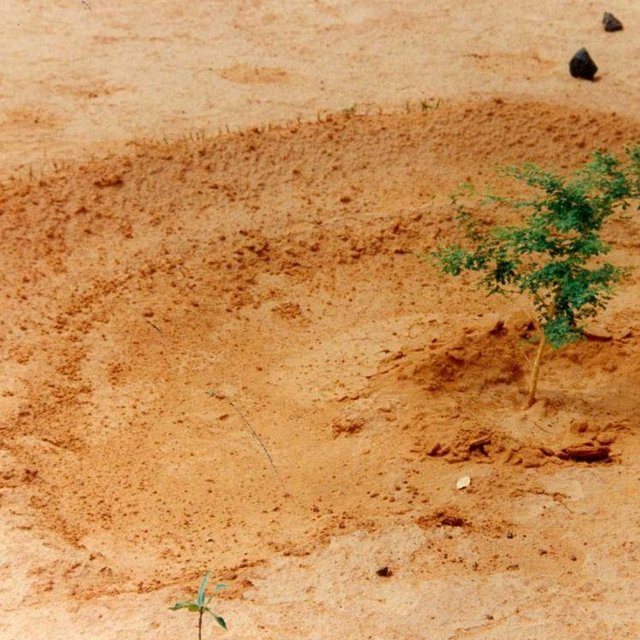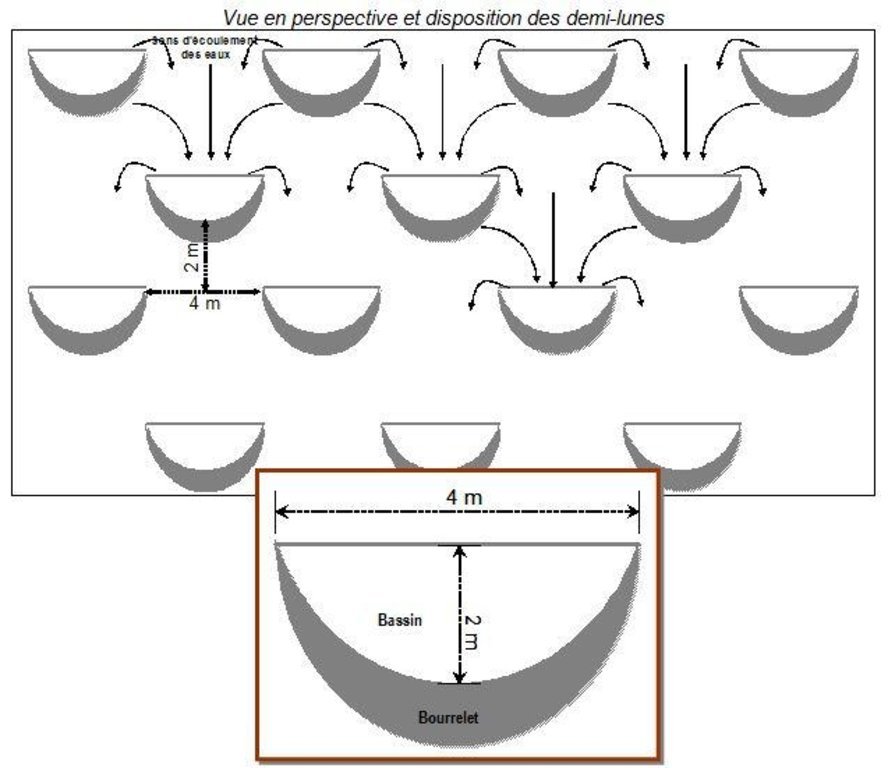



This technique involves building low embankments with compacted earth or stones in the form of a semi-circle with the opening perpendicular to the flow of water and arranged in staggered rows. They are constructed on gently to moderately sloping pediments and plateau areas in order to rehabilitate areas that are degraded, denuded and/or affected by soil crusting.
Depending on their purpose, the areas inside the semi-circular bunds, enriched with organic fertiliser, are used for growing cereals (crop crescents) and for planting trees, bushes and/or grasses (forestry and pastoral crescents). Semi-circular bunds slow down and capture runoff, providing the plants inside them with the water they need. They therefore reduce the loss of water and the fertile layers of the soil. This is particularly advantageous when rain is scarce, as the semi-circular bunds channel water towards the plants, increasing the moisture available to them. In the medium term, rich sediment builds up behind the semi-circular bunds, which helps to protect and restore the land. The bunds ensure that the manure placed around the plants inside them is not washed away by heavy rains, and the ridge of the bund protects young plants from the wind and wind erosion. When they are used for reforestation, they increase the rate of survival of the trees planted in them. Cropland bunds enable crops to survive dry spells. Earthen bunds are not, however, suitable in a scenario with heavy rainfall. They do not allow water to filter through, which can result in the soil inside them becoming waterlogged and the plants being flooded. This can lower yields in the case of crops that do not tolerate excess water. In such conditions, stone bunds are preferable.
To establish semi-circular bunds on cropland, the following activities are required: marking out the contour line, laying out the lines of the semi-circular bunds in staggered rows, digging the microcatchment, forming the ridge downhill of the microcatchment, applying organic fertiliser (around 1 t per ha per year).
To establish semi-circular bunds on forestland the same steps are required, however instead of applying fertilizer, other steps include digging the holes, planting the trees, and sowing grass on the ridges. The earthen ridges around cropland bunds need to be rebuilt each year. It is recommended that the ridges of forest/rangeland bunds be maintained each year and raised if overflowing has occurred. Forest/rangeland sites should be protected from grazing animals in the first two to three years, until the vegetation is well established. This requires good community organisation. After dry years, forest/rangeland semi-circular bunds may have to be re-sown with grasses and replanted with trees.
The Sahel is a region where the population has always faced a high degree of climate variability, manifested both in terms of time (unexpected dry spells can occur during the rainy season) and in terms of space (rainfall can vary greatly from one area to another). The population is mainly composed of small farmers and livestock keepers.
Over the last two decades, the effects of climate change have exacerbated the already difficult conditions. Accord¬ing to projections made by climatologists, the Sahel will experience a rise in temperatures combined with highly variable rainfall and an increase in extreme weather events. The Soil and Water conservation and rehabilitation techniques have helped people in the Sahel to manage their ecosystems more effectively and improve their productive land. As a result, communities are better prepared to cope with environmental changes (changes in the climate, land degradation, etc.) and the im¬pact of shocks, particularly droughts.

Location: Regions of Tillabéri, Filingué, Ouallam, Téra and Tahuoa in Niger; Bam region in Burkina Faso, Niger, Burkina Faso, Chad, Niger
No. of Technology sites analysed:
Spread of the Technology: evenly spread over an area (approx. 10-100 km2)
In a permanently protected area?:
Date of implementation: 10-50 years ago
Type of introduction








| Specify input | Unit | Quantity | Costs per Unit (CFA Franc) | Total costs per input (CFA Franc) | % of costs borne by land users |
| Labour | |||||
| labour | ha | 1.0 | 201.5 | 201.5 | 100.0 |
| Equipment | |||||
| tools | ha | 1.0 | 17.3 | 17.3 | 100.0 |
| Total costs for establishment of the Technology | 218.8 | ||||
| Total costs for establishment of the Technology in USD | 0.42 | ||||
Cropland bunds constructed on abandoned farmland increase millet yields by 180 kg and straw yields by 400 kg per hectare per year
Forest/rangeland sites should be protected from grazing animals in the first two to three years, until the vegetation is well established. This requires good community organisation.
Sites improved with semi-circular bunds for reforestation produce one stere of wood per hectare per year after ten years. The value of this production can increase further from the fifth year onwards to around 850,000 CFA francs per hectare
notably increses production of food, fodder and forest products